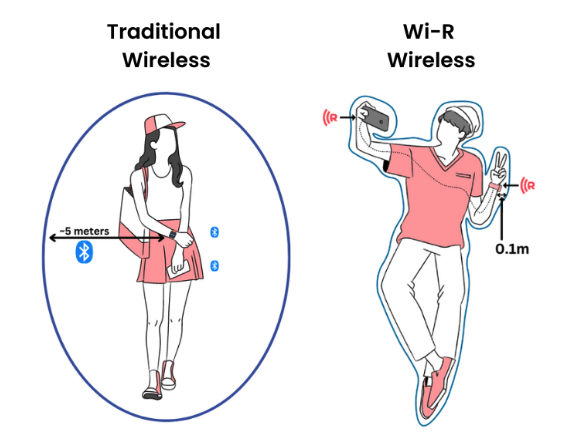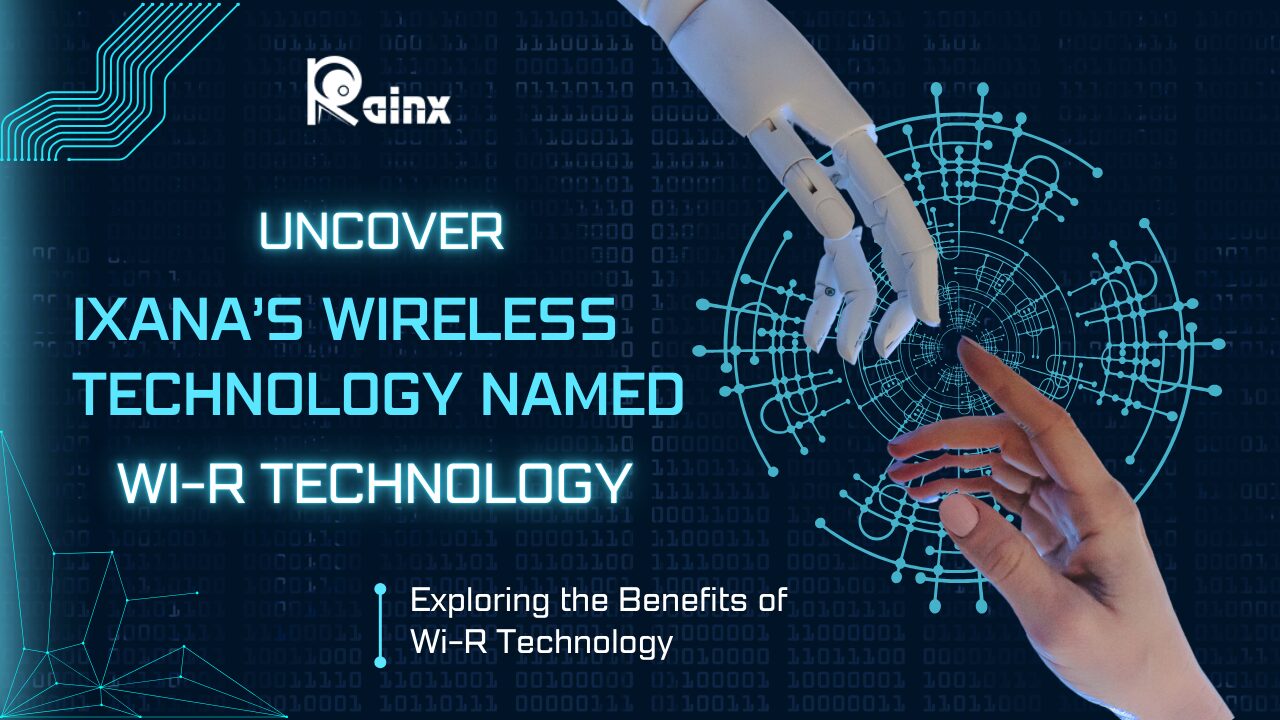Wireless Technology
Ixana is looking to transform communication by reducing the range of wireless signals. They have developed a special system called Wi-R, which operates like a “wire-like wireless” method without radiation. This system enables data transfer, including contact info and streaming videos, just by shaking hands.
In this article, we will delve into the meaning of Wi-R Technology, how it works, its benefits, and various use cases. Let’s dive in.
What is Wi-R technology?
According to Shreyas Sen from Ixana, Wi-R represents a groundbreaking advancement in non-radiative near-field communication technology, utilizing Electro-Quasistatic (EQS) fields to facilitate communication, as noted in a recent article brought to our attention by CNX Software.
Anyone within a 5 to 10-meter radius (about 16 to 32 feet) can tap into Bluetooth signals. However, Wi-R keeps its signal tightly bound to the surface, resembling the nature of wired connections. This is the essence of ‘Wire-like Wireless,’ or ‘Wi-R.’
A hearty handshake could define the future of communication, thanks to Ixana’s revolutionary Wi-R technology. The essence of Wi-R is to restrict communication to the surface of the user’s body or a minimal distance. Imagine holding a smartphone in one hand while it communicates effortlessly with a smartwatch on your other wrist, a fitness tracker on your ankle, or smart glasses on your head.
How does Wi-R technology work?
Conventional wireless signals can be found all around us within a certain range, while near-field communications limit that range significantly. This type of transmission, which doesn’t focus on direction, tends to be less efficient.
In contrast, Wi-R is engineered for communication between wearable devices, creating a signal bubble that acts like a wire. This innovative approach enhances robustness, efficiency, and the ability to select touch inputs.
Benefits of Wi-R technology
Wi-R Technology is capable of several innovative features, which can transform how we interact with wearable devices and technology in general. Let’s dive into its capabilities:
Touch Selectivity Leading to Touch Detection
Wi-R can differentiate between various touch inputs, allowing for precise interaction with devices through physical contact.
High-Speed Communication
Wi-R technology enables fast data transmission, likely surpassing traditional Bluetooth speeds.
Charging-Free Wearables
Wi-R technology aims to eliminate the need for batteries in wearables, potentially utilizing the body’s own electrical properties for power.
Real-Time Health Dashboard
You could have immediate access to your health metrics and data, displayed in real-time, enhancing wellness monitoring.
Support for Multiple Wearables on Body
Wi-R technology allows simultaneous connections to multiple wearables, streamlining the interaction experience.
All-Day AR Smartglass
Wi-R can facilitate augmented reality experiences throughout the day without significant power drain.
Offload Compute from Wearables to Phone
Heavy computational tasks can be processed on a smartphone rather than on the wearable itself, improving performance and efficiency.
Touch to Securely Pay and Unlock Systems
You can perform secure transactions and access control with a simple touch, enhancing convenience and security.
Low Power Consumption
Wi-R is built to operate using significantly less power than conventional wireless technologies, contributing to longer device usability and sustainability.
Key difference between Traditional Wireless or Wi-R Wireless?

A key distinction between Wi-R and other wireless protocols lies in the method of transmitting and receiving data. Conventional wireless devices typically depend on radiative power transfer, primarily utilizing radio frequency (RF) waves. Although RF technology is popular and effective, it does have certain drawbacks when it comes to short-range communication.
Generally speaking, creating a wireless link involves establishing connections in several directions. This means that an RF system must emit and capture power from all angles. Unfortunately, this results in power losses since some of the radiated energy is directed toward areas where it goes unused.
Moreover, the expansive range and low directivity of RF communication can pose security risks, enabling information to be easily accessed from long distances by unauthorized parties.
Wi-R distinguishes itself by not depending on radiation for its communication needs. Instead, it mirrors the functionality of NFC and wireless charging, which use magnetic fields for energy transfer. Wi-R utilizes electric fields, known as Electro-Quasistatic Fields (EQS), to transmit data effectively.
Air serves as a barrier for EQS fields, preventing them from traveling. Nevertheless, when a conductor like the human body is placed near or in contact with the source, these fields create a protective “bubble” around the user, ensuring their information remains secure while also forming a new avenue for communication.




















